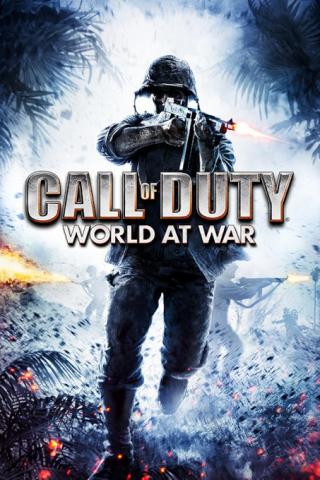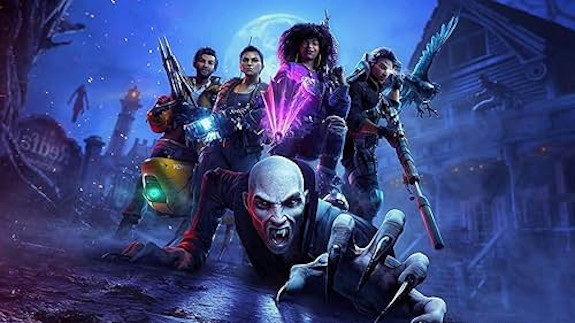Game Drain: What Subscription Services Spell for the Industry

With Microsoft’s acquisition of Activision Blizzard, the videogame company behind the massive Call of Duty, Overwatch, and Warcraft franchises, Xbox (a subsidiary of Microsoft) adds another notch to an already impressive belt of game publishers and developers owned by the computing giant.
The list of franchises under Microsoft's grasp is so expansive that the Federal Trade Commission tried to stop the transaction - twice.
While Microsoft's questionably monopolistic hold over some of gaming's most beloved franchises is concerning in its own right, more worrisome is how Microsoft's means to capitalize on its acquisitions could fundamentally alter the whole gaming industry.
Microsoft’s major marketing push in gaming has been Xbox Game Pass: a subscription service that gives users access to a rotating library of hundreds of games. For simplicity’s sake, think Netflix for gaming.
One of the biggest appeals of Game Pass is a monthly price lower than the cost of buying a single one of the games on offer – which is a big deal considering the price of a full release has increased with the introduction of the latest consoles.
This makes a subscription-service solution seem like a more consumer-friendly way to get into a normally expensive hobby.

Xbox’s biggest draw comes from the inclusion of brand new games -- mainly leveraging its popular franchises, such as Halo and Gears of War.
The most recent of these are games by Bethesda Softworks, the company acquired by Microsoft in 2021, which owns the popular Fallout, The Elder Scrolls, DOOM, and Dishonored franchises. Its two most recent games, Redfall and Starfield, were both given launch day access for Game Pass users.
Redfall’s launch was a notable letdown. Microsoft Gaming CEO Phil Spencer admitted both he and the Xbox community were disappointed with the game’s condition on launch.
The game has a low 56 (out of 100) critic score on Metacritic, with even worse user reviews. Gamers argued that the game was unfinished, mired by a large number of bugs and gameplay issues, many of which are highlighted in this review by CNN.
The problem with a subscription-based model is that it stifles consumer expectations. There is a lesser sense of loss when the price is four times lower than the retail rate. With the hundreds of other games available, there is still plenty of content to help justify the cost.
Despite Redfall’s disappointment and arguably bad content, the pedigree of its developer and the uniqueness of its premise undoubtedly spurred some subscriptions to Game Pass, which ultimately matters more than a purchase, or even the quality of the game itself.

While Xbox obviously isn’t striving for a “Join Game Pass; we have mediocre games” model, there is less pressure to create an outstanding product since its shortcomings can be compensated by the greater overall value.
In this sense, marketing matters more than content. If you build excitement over a new game, even if the game in question is underwhelming, it still has the rest of the service to fall back on.
This issue can go both ways. Starfield was a massive success. According to Forbes, Starfield is largely responsible for the Xbox’s most profitable quarter in its history. The game also spurred the most sign-ups for Game Pass in a single day since the service was created.
The game has had a positive critical reception with an 83 critic score and a solid-but-notably lower 7.0 (out of 10) user score on Metacritic.
While the overall response has been positive, the game has been rather contentious, with some critics dragging down the reviews on outlets like Steam, a platform which doesn’t benefit from the lower price available via Game Pass.
According to Forbes, much of the criticism centers around the game’s refusal to stray far from Bethesda tradition.

While the arguably more forgiving environment of a subscription should ease the risk of experimentation, the fact that people aren’t really forking over that much money will also mean that they are more willing to settle for mediocrity.
The biggest worry with subscription-based gaming lies in the method by which it may further erode our already tenuous ownership of digital media.
PC Gamer says industry analysts are skeptical of the possibility of subscriptions taking over the gaming market, citing that subscription services only made up 4 percent of game spending in 2021.
PC Gamer further states that the majority of spending in gaming (79 percent of the market) was on microtransactions, in-game purchases for the products people were already playing.
However, even if the subscription isn’t the big moneymaker, it does reduce the upfront cost to play games, therefore making their far more profitable microtransactions more accessible.
It is important to note that Xbox’s own self-reported statistics state that Game Pass users spend 45 percent more on microtransactions.

In this instance, it doesn’t matter that the subscription is only a fraction of the market. The subscription becomes the vector through which you push gamers to spend on the microtransactions that really rule the market.
With Microsoft buying up so many of gaming's most iconic brands, many notorious for microtransactions such as Call of Duty, and Overwatch, it’s easy to see how the subscription model may be a way to encourage in-game spending.
It is still too soon to start lamenting the death of traditional game ownership. However, the fact that nearly 80 percent of game spending isn’t from the outright purchase of games doesn’t bode well for the future of the traditional model. If the subscription model leads to more stagnant and derivative games, perhaps they won’t continue to be worth owning.
Author Bio:
Garrett Hartman is a contributing writer at Highbrow Magazine.
For Highbrow Magazine































































































































































































































































































































